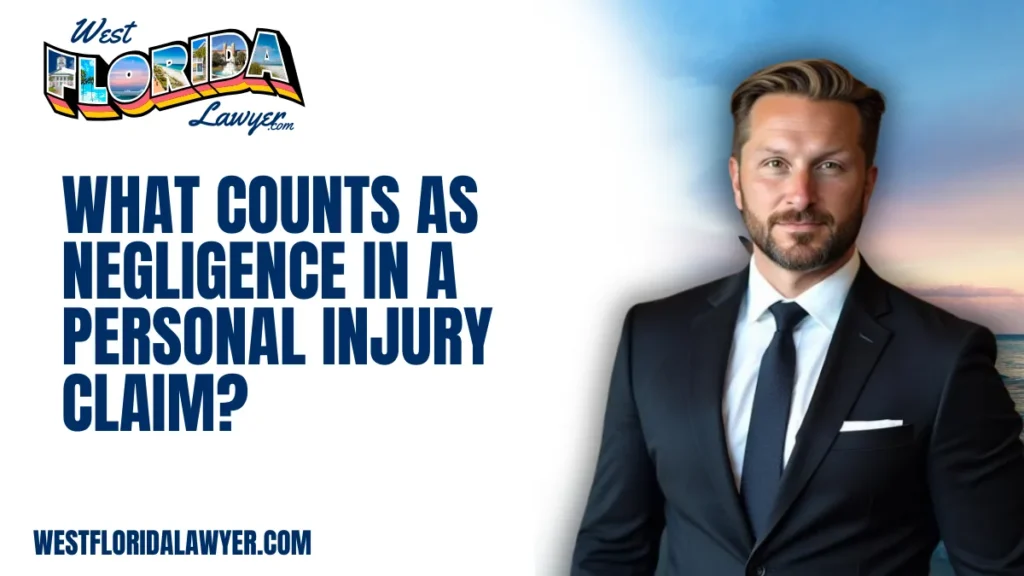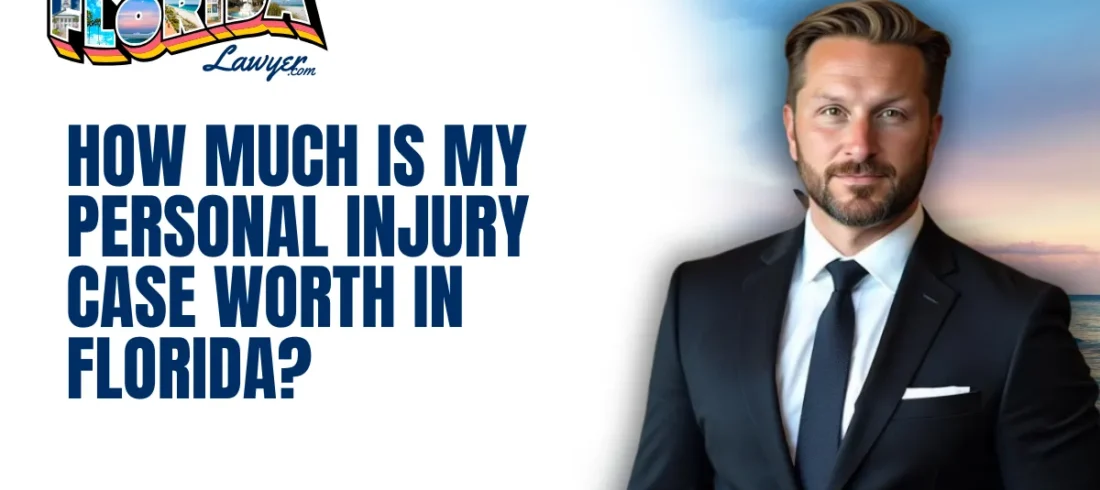
Proving negligence in personal injury case is the cornerstone of successfully obtaining compensation for injuries caused by another party’s actions. Whether you’ve been injured in a car accident, a slip and fall, or due to medical malpractice, the ability to prove negligence is essential for holding the responsible party liable. At West Florida Lawyer, we understand the intricacies of negligence claims and work tirelessly to ensure that our clients receive the justice they deserve.
Complete our free case evaluation form today and let’s talk about how we can help.
The Legal Definition of Negligence
To begin proving negligence in personal injury case, it’s crucial to first define what negligence means in legal terms. Negligence occurs when a party fails to act with the level of care that a reasonable person would use in a similar situation, thereby causing harm to another person. In personal injury law, negligence is not just a careless act—it’s a breach of a legal duty to act with care.
Four Key Elements of Negligence
To successfully prove negligence in a personal injury claim, four key elements must be established:
- Duty of Care
- Breach of Duty
- Causation
- Damages
Each of these elements must be addressed to build a strong case.

1. Duty of Care in Proving Negligence in Personal Injury Case
The first step in proving negligence in personal injury case is establishing that the defendant owed a duty of care to the plaintiff. The duty of care is the legal obligation one party has to avoid causing harm to another. For example:
- A driver has a duty to follow traffic laws and operate their vehicle safely.
- A property owner must maintain safe conditions for visitors.
- A doctor has a duty to provide competent medical care to their patients.
If no duty of care exists, a claim for negligence cannot be made. However, in most personal injury cases, this duty is straightforward to establish.
2. Breach of Duty: The Core of a Negligence Claim
After establishing that the defendant owed a duty of care, the next critical step is proving that the defendant breached that duty. A breach of duty occurs when the defendant’s actions fall below the standard of care that a reasonable person would have exercised in the same circumstances.
Examples of breach of duty include:
- A driver texting while driving.
- A business failing to clean up a hazardous spill on the floor.
- A healthcare provider performing surgery while impaired by alcohol.
Determining whether a breach occurred is often the most contested part of proving negligence in personal injury case. Courts typically apply the “reasonable person” standard to assess the defendant’s conduct.
3. Causation: Linking the Breach to the Injury
Proving causation is essential in establishing negligence. Even if a duty of care was breached, the plaintiff must prove that the breach directly caused the injury. There are two types of causation:
- Actual cause (or “but-for” causation): Would the injury have occurred “but for” the defendant’s actions?
- Proximate cause: Was the injury a foreseeable result of the defendant’s conduct?
For instance, if a driver runs a red light and crashes into another vehicle, causing injuries, it is clear that the breach of traffic laws (the red light) directly caused the accident.
However, causation can be complex in some cases, especially where there are multiple potential contributing factors to the injury. Proving both actual and proximate cause is key to proving negligence in personal injury case.
4. Demonstrating Damages in a Personal Injury Case
The final element in proving negligence is damages. In a personal injury case, damages refer to the harm or loss suffered by the plaintiff due to the defendant’s negligent actions. These damages may include physical injury, emotional distress, property damage, or financial loss.
Common damages include:
- Medical expenses: Costs for hospital stays, surgeries, and treatment.
- Lost wages: Income lost due to the injury.
- Pain and suffering: Physical and emotional distress caused by the injury.
- Loss of consortium: Harm caused to the plaintiff’s relationship with their spouse.
Without actual damages, there is no basis for a personal injury claim, regardless of whether negligence occurred.
Common Examples Where Negligence Applies
Negligence can manifest in many situations. Below are some common types of personal injury cases that require proving negligence in personal injury case:
Motor Vehicle Accidents
Drivers have a responsibility to operate their vehicles safely. Accidents caused by distracted driving, speeding, or driving under the influence of alcohol or drugs are clear examples of negligence. Establishing that the driver failed to follow traffic laws and caused the accident is crucial.
Slip and Fall Accidents
Premises liability cases involve property owners who fail to maintain safe conditions. If someone slips on a wet floor or trips on uneven flooring, it must be proven that the property owner was negligent in maintaining the property or failing to warn visitors of potential hazards.
Medical Malpractice
Doctors and healthcare professionals owe a duty to provide care that meets the medical community’s accepted standards. Mistakes such as surgical errors, misdiagnosis, or improper treatment are breaches of this duty and can lead to malpractice lawsuits. Proving negligence in personal injury case often requires expert testimony to explain how the defendant’s actions deviated from the standard of care.
Product Liability
Manufacturers and retailers have a responsibility to ensure that their products are safe for consumers. If a defective product causes injury, a negligence claim may be made against the manufacturer, showing that they failed to provide a safe product or adequate warnings.
Evidence Crucial to Proving Negligence in Personal Injury Case
In any personal injury case, evidence plays a pivotal role in proving negligence. Key types of evidence include:
- Photographs and videos: Documentation of the scene of the accident or injury.
- Medical records: Evidence of injuries, treatments, and medical expenses.
- Eyewitness testimony: Statements from people who observed the incident.
- Police and incident reports: Official documentation that details the circumstances of the accident.
- Expert testimony: Experts who can explain technical aspects of the case, such as medical malpractice or vehicle crash analysis.
Strong evidence is necessary to make a compelling argument for negligence and secure compensation.
Comparative Fault: When More Than One Party Is Negligent
Florida follows a comparative negligence rule, which means that the plaintiff’s compensation may be reduced based on their percentage of fault in the incident. For example, if the court finds that the plaintiff was 20% responsible for the accident, their compensation will be reduced by 20%.
This makes it even more important to thoroughly prove negligence in personal injury case—the less fault assigned to the plaintiff, the higher the potential compensation.

The Role of Insurance Companies in Proving Negligence in Personal Injury Cases
Insurance companies are often involved in personal injury cases and play a significant role in proving negligence in personal injury case. Their goal is to minimize payouts, which means that they may challenge your claims and seek to avoid liability.
How Insurance Adjusters Handle Negligence Claims
Insurance adjusters investigate claims to assess their validity. They examine the evidence to determine whether the defendant was negligent and what the extent of damages is. Their tactics may include:
- Evaluating liability: They assess who is at fault and whether negligence occurred.
- Assessing damages: They evaluate the scope of your injuries and associated costs.
- Minimizing payouts: Insurance companies may offer a low settlement or dispute key aspects of your case.
How Your Attorney Can Help
An experienced attorney ensures that your interests are protected during negotiations with insurance companies. They will:
- Gather and preserve evidence: To ensure that nothing is overlooked or disputed by the insurer.
- Negotiate effectively: To secure a fair settlement on your behalf.
- Take the case to court: If necessary, they will file a lawsuit to pursue justice if the insurance company offers an unfair settlement.
Having an attorney by your side can make a significant difference when dealing with insurance companies and proving negligence in personal injury case.
Negligence Is the Cornerstone of Your Personal Injury Claim
Proving negligence in personal injury case is vital to achieving the compensation you deserve. From establishing the duty of care to demonstrating the extent of damages, each element must be meticulously supported with evidence. With the help of a skilled attorney at West Florida Lawyer, you can navigate the complexities of negligence law and secure the justice and financial compensation you need.
Sources
- Cornell Law School – Legal Information Institute
A trusted source for definitions and explanations of legal concepts like negligence and duty of care.
https://www.law.cornell.edu/wex/negligence - American Bar Association – Torts and Personal Injury
Comprehensive resource on tort law, including personal injury and negligence claims.
https://www.americanbar.org/groups/public_education/resources/law_issues_for_consumers/tortlaw/ - Florida Statutes – Negligence Laws
Official resource for Florida-specific legal statutes related to negligence, comparative fault, and liability.
http://www.leg.state.fl.us/statutes/


